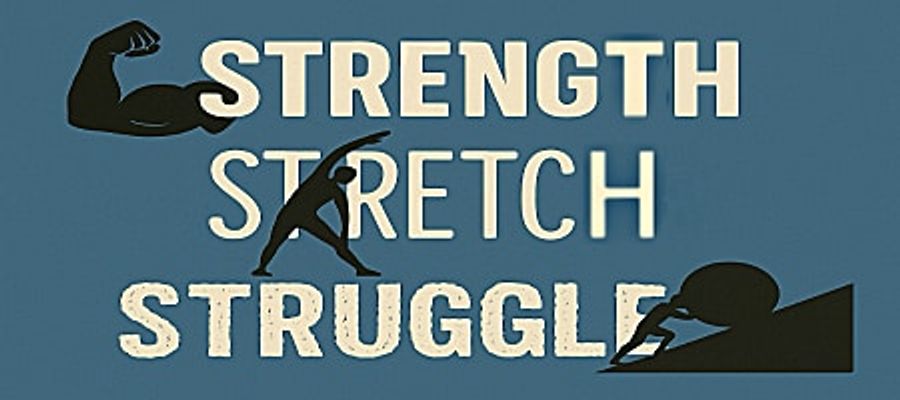7.
Strength: Care
Understanding CARE in Your LeadershipCARE means intentionally watching over and responding to people's needs and well-being.This involves knowing your people deeply as individuals, connecting authentically to build trust, providing practical and emotional support when needed, and protecting your team from unnecessary stress or harm. But how this shows up in your leadership depends on whether Care is your strength, stretch, or struggle.If Your STRENGTH is Care, that means...You naturally notice and respond to people's human needs. You see people as whole individuals, not just workers. You pick up on subtle cues when someone is struggling, and you genuinely want people to thrive both personally and professionally.What this looks like in practice:You remember details about people's lives, families, and personal situationYou can sense when the team dynamic feels off or when someone is having a rough dayPeople come to you with both work problems and personal challengesYou create environments where people feel safe to be authentic and vulnerableYou naturally think about how decisions will affect people, not just processesYour leadership feels effortless in this area because:Knowing people comes naturally - you're genuinely curious about others and remember what matters to themConnecting authentically feels normal - you create psychological safety without thinking about itProviding support is instinctive - you see needs and want to help meet themProtecting your team happens automatically - you shield people from unnecessary stress or politicsThe opportunity: Your natural care creates deep loyalty and trust that becomes the foundation for everything else. People will take risks, accept feedback, and push through challenges for leaders who genuinely care about them.If Your STRETCH is Care, that means...You care about people, but you have to be more intentional about showing it. You might be focused on results or tasks and need to remind yourself to check in on the human side of leadership. You care, but people might not always feel it.What this looks like in practice:You get caught up in work and forget to check how people are doing personallyYou care about your team but might not express it in ways they recognizeYou want to help when people struggle but aren't always sure what kind of support they needYou sometimes prioritize getting things done over making sure people feel valuedYou know you should connect more with your team but it feels awkward or forcedYour leadership in this area requires conscious development:Knowing people: You need systems to track and remember personal details about your team membersConnecting authentically: You have to schedule time for relationship-building conversationsProviding support: You need to ask directly what people need rather than assumingProtecting your team: You have to be more intentional about shielding them from organizational stressThe opportunity: Because care doesn't come as naturally, when you do focus on it, people really notice and appreciate the effort. Your intentional care often means more than natural care because people know you're choosing to prioritize them.If Your STRUGGLE is Care, that means...The relational and emotional aspects of leadership feel overwhelming, uncomfortable, or unclear. You might worry about crossing professional boundaries, feel awkward with personal conversations, or struggle to know how much you should care about people's non-work issues.What this looks like in practice:You prefer to keep work relationships professional and task-focusedYou feel uncomfortable when people bring personal problems to youYou worry that caring too much will make you seem weak or lead to favoritismYou're not sure how to respond when people are emotional or strugglingYou might avoid deeper relationships because you don't want to get too involvedYour leadership challenges center around:Knowing people: Personal conversations feel invasive or irrelevant to workConnecting authentically: Building relationships beyond work tasks feels forced or inappropriateProviding support: You're not sure what kind of help is appropriate or effectiveProtecting your team: You focus on work protection but miss emotional or psychological needsThe path forward: Start with your natural strengths in Lead or Develop to create value for people, then gradually build care into those strengths. If you're strong at Lead, show you care through clear direction and removing obstacles. If you're strong at Develop, show you care by investing in people's growth.Practical strategies:Start with work-related caring - removing obstacles, providing resources, advocating for your teamFocus on one-on-one check-ins with simple questions about how people are doingRemember that boundaries are actually caring - people need clarity, not just warmthShow care through actions more than words - protect people's time, give them credit, fight for their resourcesPartner with others who are naturally strong at care to handle more sensitive situationsYour Next StepsLeverage your Care strength to build trust and create the foundation for everything elseIdentify your stretch area (Lead or Develop) and create systems to grow thereFace your struggle area honestly—this is where you're likely losing leadership effectiveness without knowing itRead this LDC Blog Post to get a fuller understanding of how Lead Develop Care work together to create transformative leadersReady to Build Your Complete Leadership Profile?The LDC Blueprint will show you exactly how to leverage your Care strength while building the other areas. You'll get a personalized roadmap that fits your specific role and challenges.Because you took the time to take this assessment, we want to offer you 20% off your LDC Blueprint with code QUIZ20.
